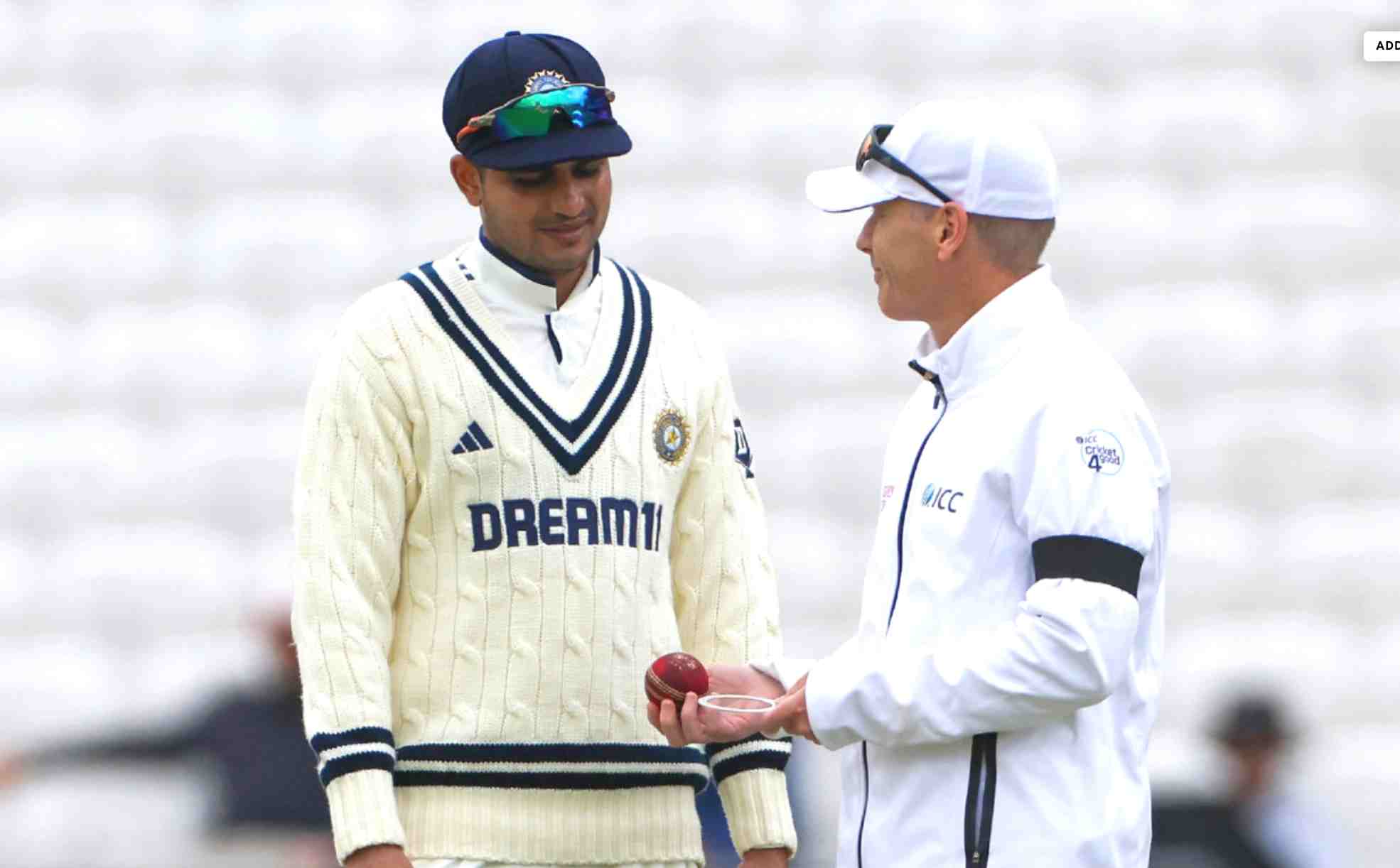ENG vs IND 2025: Dukes ball becomes ineffective post shine – How it’s impacting the game? A statistical deep dive after two tests.

Test cricket in England always brings a different excitement among the fans, thanks to the even contests between bat and ball. However, the summer of 2025 is a bit different. Just after an hour of the first morning, a bowler would complain to the umpires about the ball. Two overs later, it’s the captain doing the same. After 10 overs, it’s the cover fielder checking the ball’s shape.
The umpires’ hands are tied behind. They reluctantly bring the gauge out and pass the ball through it. After various attempts, finally, the players were successful in changing the ball. That’s the same routine for both camps in the first couple of Tests of the Anderson-Tendulkar Trophy 2025.
The surfaces in the Bazball era ( June 1, 2022 onwards) have been flat with no assistance for the bowlers. In addition, the Dukes balls have gotten soft too soon. Now, the softer balls on those dry pitches are a nightmare for the bowlers.
Read More: ENG vs IND, 2025: India’s potential bowling attack for Lord’s Test
Notorious behavior of Dukes balls in various periods
Since June 2022, England have picked up 84 Test wickets with the new ball (overs 1-20) at home. The average of 33.01 with an economy of 3.30 is a decent one. South Africa used the shine brilliantly in this period in the UK, with 21 wickets in four fixtures at an average of 25.14.
Once the shine comes out after the 20th over, the teams start to struggle. Australia averaged 51.09 during their seven red-ball fixtures in England in this period from the 21st to the 50th over. If a team fails to pick up wickets with the new ball, then it’s hard to contain runs till the second new ball arrives.
India average nearly 60 in England during this passage from the 51st to the 80th over. This has been the same picture during their ongoing series against the Ben Stokes-led side.
Let’s take a look at how both sides performed with various characters of the Dukes ball in the ongoing Anderson-Tendulkar Trophy 2025.

Once the teams get the second new ball, it becomes easy to attack the lower order of the opposition. England enjoyed 20 wickets after the 80th over only due to the visitors’ lower-order collapse at Leeds.

That’s why it was hard for the home bowlers to break the fifth or sixth wicket partnerships involving Shubman Gill, Rishabh Pant, and Ravindra Jadeja. On the other hand, when Jamie Smith and Harry Brook were rescuing them at Edgbaston, the visiting bowlers looked clueless. Quite rapidly, they used the ODI field placement.
Akash Deep is the most successful bowler in the first 20 overs in the series. With five wickets, he averages under 16 in two innings. But once the ball gets old from the 21st to the 50th over, his average moves north to 47. However, Brydon Carse enjoys the ball once the shine comes out as he has taken four wickets at 21.50 between the 21st and 50th over.
Read More: Akash Deep’s bowling smarts & effectiveness with new ball make him stand out
Referring to what Gill said about Dukes ball getting soft, it's time ICC should standardize specifications of the ball too. I feel a touring team should be given a choice of using a particular ball. They should choose between the SG Test, Kookaburra and Dukes.
— Makarand Waingankar (@wmakarand) July 7, 2025
Dukes ball maker urges ICC to change the rule
At the end of the second fixture, Gill admitted that it ‘gets difficult for the bowlers once the ball gets old.’ He also addressed that on a flat surface, it becomes really hard for the bowlers to run in with an out-of-shape delivery. He reckoned that ‘there should be more help’ so that they don’t get defensive in the middle half of the innings.
In March 2023, Dilip Jajodia, owner of the Dukes ball, told the Telegraph that the balls in 2022 were ‘rubbish’. That was due to the COVID-related manufacturing malfunction. Now, two years later, during an interview with the Times of India, he feels ‘it has become fashionable to criticise the ball.’
In his words, ‘the bowlers and captains have made it a habit to put pressure on the umpires when they are not able to take wickets.’ He reminded that ball manufacturing depends on the human element and natural raw material- cowhide. Dilip also has the solution to tackle the issue. He advises the authorities to allow the second new ball from the 60th or 70th over, instead of the 80th.
At Edgbaston, England made Shoaib Bashir bowl long spells so that they could quickly get the second new ball. During the Oval Test of the 2023 Ashes, the umpires changed the ball in the 37th over. And Australia fell like a pack of cards. They were 140/0 in the 41st over and could add only 194 runs for the loss of 10 wickets in the 384-run chase.
India tried various plans with the new ball in the fourth innings. Going wide of the crease, shuffling the length, or bringing the stumps into play- various tactics brought success. Taking three wickets in 16 overs on the fourth evening, they made it easier on the fifth morning to level the series at 1-1.
Now, it’s up to the ICC and the boards to take the final call. And it’s high time for that. Otherwise, the contest between bat and ball will be lost on flat surfaces.
Read More: ENG vs IND, 2025: Kuldeep Yadav could be the X-factor India could try in dry conditions

